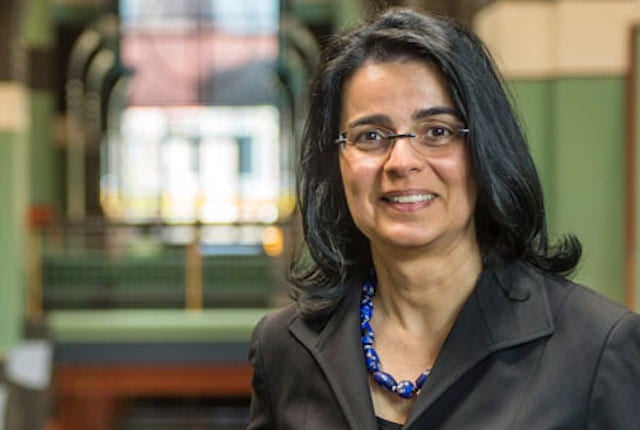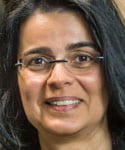By Patrick Kurp
Special to the Rice News
Lydia Kavraki, the Noah Harding Professor of Computer Science at Rice, has received a National Science Foundation (NSF) Rapid Response Research grant to implement a computational pipeline to help identify fragments of SARS-CoV-2 viral proteins that could be used as targets for vaccine development.
“Efforts are already underway to produce new drug inhibitors, repurpose existing drugs and devise combination treatments for COVID-19,” said Kavraki, who is also a professor of bioengineering, electrical and computer engineering and mechanical engineering.
“At the same time, vaccine development targets both neutralizing antibodies against envelope proteins of the virus and long-term, cell-mediated immunity based on T-cell lymphocytes," she added. "T-cell responses are particularly important for fighting viral infections because they can find and eliminate infected cells.”
The $119,747 grant will fund Kavraki’s proposal titled “Structure-based identification of SARS-derived peptides with potential to induce broad protective immunity.” The NSF Rapid Response grants are given “to conduct non-medical, non-clinical-care research that can be used immediately to explore how to model and understand the spread of COVID-19.”
Kavraki proposes development of a computational pipeline to help identify peptides that are conserved in various strains of SARS-CoV and could provide protective cellular immunity against the viruses. Her strategy would combine sequence-based methods for the structural modeling and analysis of peptides bound to various human leukocyte antigen (HLA) receptors.
HLAs display the peptides to T-cell lymphocytes, and the proposed pipeline would enable the identification of conserved “hot spots” for T-cell recognition.
“The goal of several researchers is to find viral peptides that, if used in a vaccine, could provide protective immunity against multiple strains of SARS-CoV-2,” Kavraki said. “Our project is restricted to the computational modeling component, and we hope it can inform future vaccine development efforts.”
– Patrick Kurp is a science writer in the George R. Brown School of Engineering.


